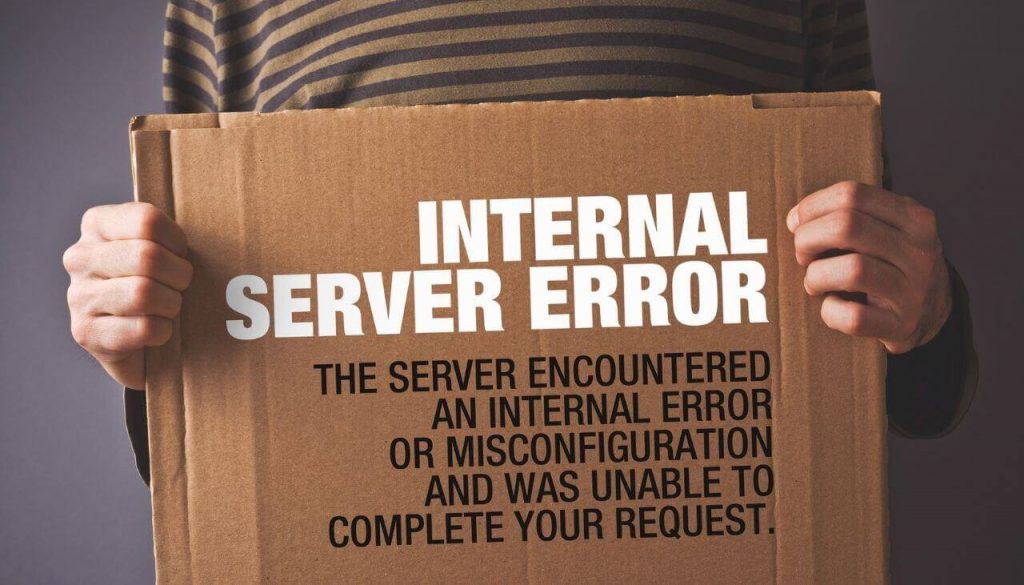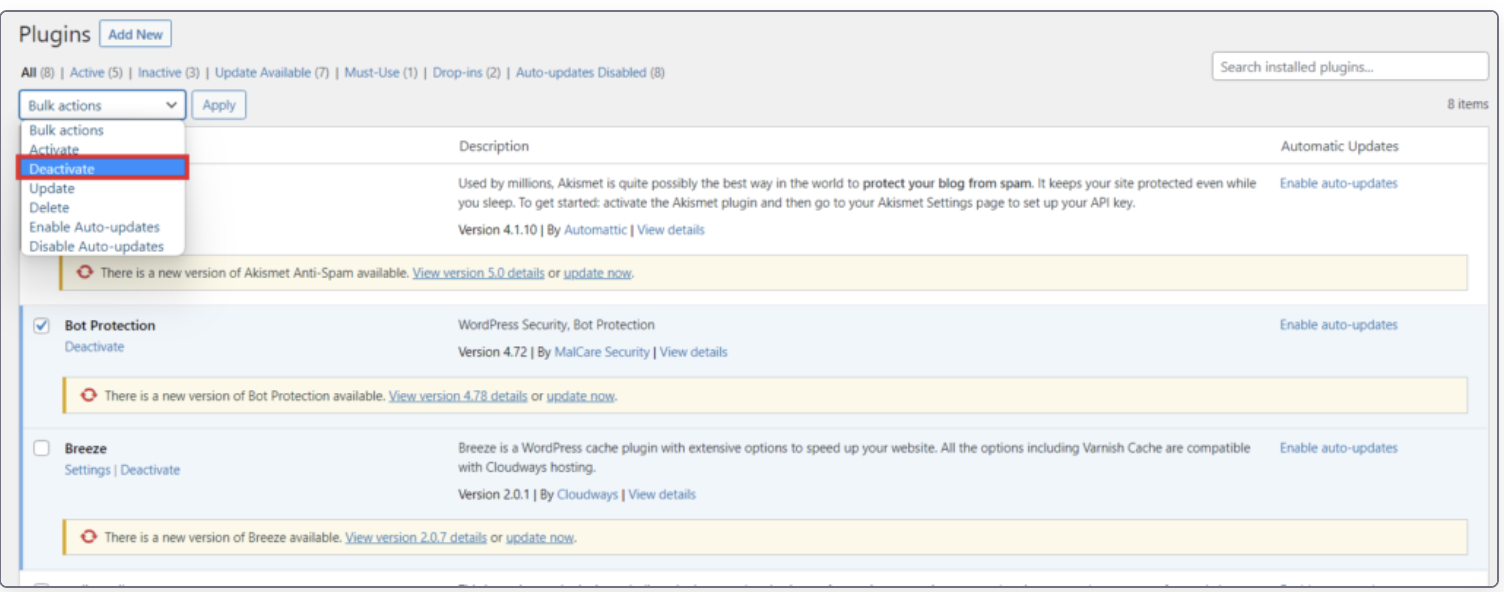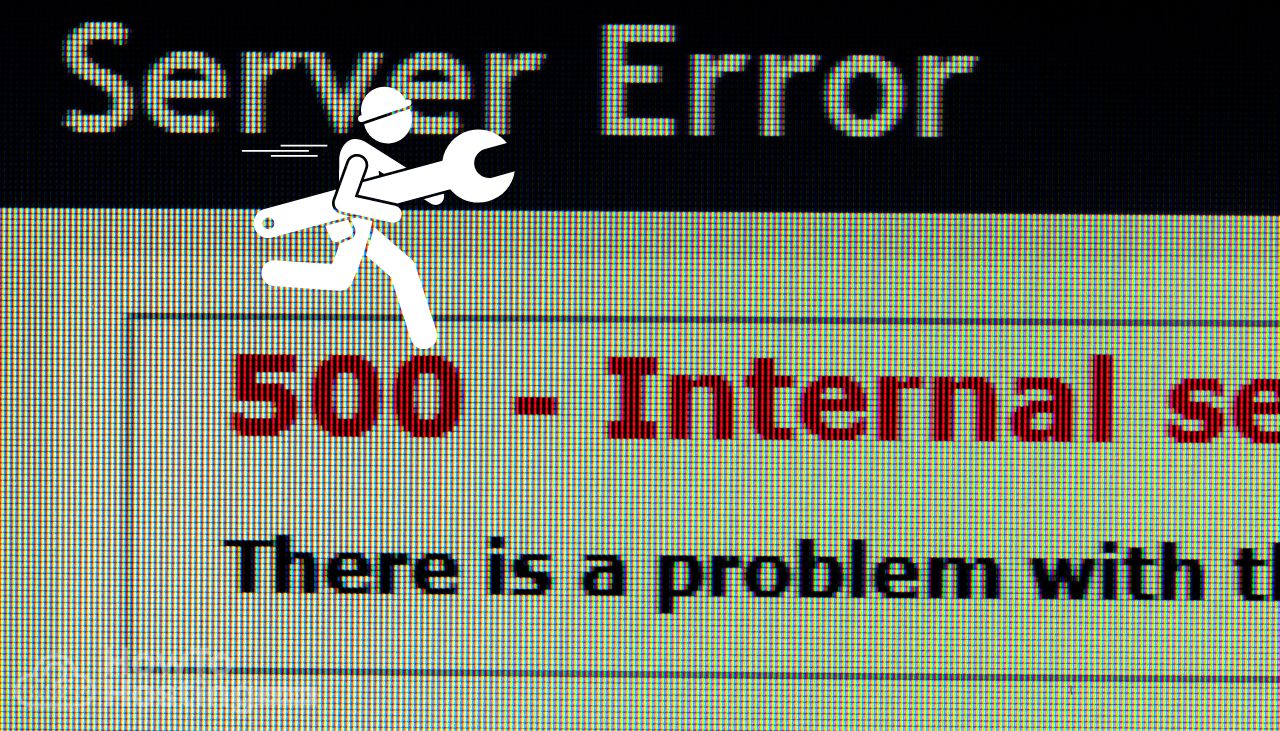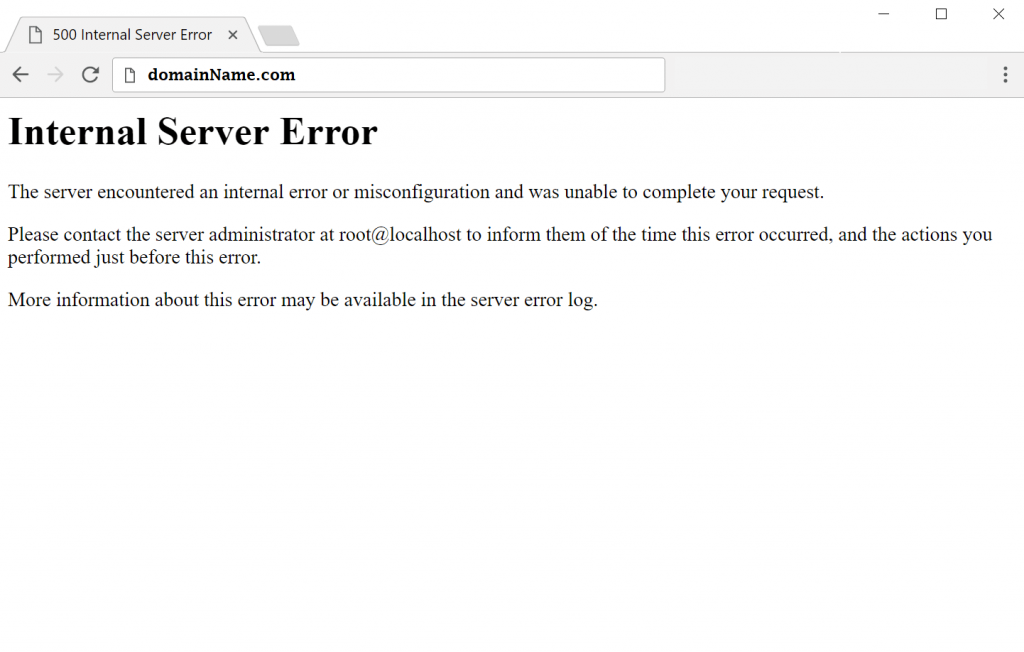On This Page: [hide]
Ever found yourself staring at a WordPress 500 internal server error, puzzled about what to do next?
This common but confusing situation happens when there’s a problem on the server’s end, obstructing access to your website. From corrupted .htaccess files to exhausted PHP memory limits, a variety of issues can be the culprits behind this error. Let’s dive deep into understanding this error and how to tackle it with a systematic approach, reducing downtime and optimizing your website’s performance.

What Is a WordPress 500 Error?
Have you ever been met with a baffling WordPress 500 internal server error on your website? Understanding what this is can feel like unlocking a cryptic puzzle. In simpler terms, the WordPress HTTP 500 error signifies an issue that’s preventing the server from delivering the requested page to the user. This error is a generic server-side error, meaning the problem does not lie with the user’s computer or connection but with the website’s server itself.
Several factors can trigger this error. These may include a corrupted .htaccess file, an overwhelming of the PHP memory limit, or even a malfunctioning plugin or theme. Sometimes, an incompatible PHP version or corrupted WordPress core files may also be at fault. The broad spectrum of causes makes it a bit challenging to diagnose and fix the error promptly.
Is Your Site Really Down? Quick Ways to Confirm
Before diving into the ocean of troubleshooting steps for a WordPress HTTP 500 error, it’s crucial to verify if your site is genuinely down for everyone or just for you. This step is vital because it can save you from embarking on an unnecessary troubleshooting journey.
One quick way to check is by using online tools like ‘Is It Down Right Now?’ or ‘Down for Everyone or Just Me?’. These tools verify the accessibility of your website from different locations, providing you with an immediate answer.
Another simple method is to try opening your website from a different browser or incognito mode to rule out any browser-specific issues. In addition, clearing your browser’s cache before attempting to access your site can help, as cached errors can sometimes lead to a mistaken impression of ongoing issues.
Performing these initial checks will inform you whether the problem is localized (just for you) or affecting all visitors. If the website is accessible from another network or through an incognito window, the issue might be related to your local network or browser. Confirming this can direct your troubleshooting efforts more effectively, ensuring you’re not fixing what isn’t broken.
In summary, the WordPress 500 internal server error is a signal that something is amiss on the server-side, affecting your website’s functionality. Approaching this issue begins with understanding its broad causes and confirming the scope of the problem. A step-by-step assessment, starting with the verification of whether the issue is indeed global, sets a solid foundation for a systematic troubleshooting process.
Why Does the Dreaded WordPress 500 Error Occur?
The WordPress 500 error often leaves website owners and developers puzzled and frustrated. This error broadly signifies that something has gone wrong on the website’s server, but it doesn’t pinpoint the exact issue, making troubleshooting a challenge. Understanding the common causes behind this error is the first step toward resolving it and getting your website back to its optimal state.
The Role of Plugins and Themes in Creating the 500 Error
Plugins and themes enhance WordPress websites by adding new features and design options. However, they can also be the source of the 500 internal server error. This usually happens in two scenarios: either when there’s a conflict between two or more plugins/themes or when a single plugin or theme is incompatible with the current version of WordPress or server settings.

Such conflicts may cause the server to halt and display the error.
- Conflict Resolution: To identify and resolve conflicts, deactivate all plugins and switch to a default WordPress theme. If the error disappears, reactivate each one by one, checking the site after each to find the culprit.
- Compatibility Checks: Ensure all themes and plugins are compatible with your WordPress version by checking their documentation or updates in the WordPress repository.
Insufficient Server Resources: A Culprit Often Overlooked
Another less obvious but equally critical cause of the 500 internal server error is the lack of server resources. This issue is particularly prevalent on shared hosting environments where server resources are distributed among several websites.
- PHP Memory Limit: WordPress requires sufficient PHP memory to run smoothly. If the memory limit is too low, it may result in the 500 error. Increasing the PHP memory limit through the wp-config.php file can often resolve this.
- Server Capacity: Websites that experience sudden spikes in traffic or are steadily growing may outgrow their hosting plans. When the server’s capacity is maxed out, it can lead to timeouts and errors. Upgrading to a higher hosting plan or a dedicated server may be necessary to accommodate your site’s needs.
While these are some of the reasons the WordPress 500 internal server error occurs, diagnosing and fixing it can be straightforward with a methodical approach. When in doubt, consulting with your hosting provider or a professional can provide additional insights.
First Response Tactics: Preliminary Steps to Troubleshoot WordPress 500 Error
When your WordPress site displays a 500 Internal Server Error, it’s a signal that something has gone awry on the website’s server. But fear not, there are preliminary steps you can take to troubleshoot this error effectively. These initial actions can help in identifying and potentially resolving the issue without delving into more complex solutions.

Refresh, Clear Cache: Initial Attempts to Revive Your Site
Two of the easiest yet often overlooked first response tactics are refreshing your page and clearing the cache. Here’s why they’re important:
- Refreshing Your Page: Sometimes, the issue causing the error is temporary. A simple page refresh can reinitiate the request to the server and possibly correct the error without further action needed.
- Clearing the Browser Cache: Your browser stores data to quickly load previously visited pages. However, this cached data can become outdated or corrupt, leading to errors. Clearing your browser cache removes this stored data, forcing the browser to load the most recent version of the page from the server.
- Clearing WordPress Cache: If your site uses caching mechanisms, outdated or corrupt cache files on the WordPress side can also cause issues. Clearing your WordPress cache can ensure you’re working with the latest site data.
These steps are especially helpful as they are quick to implement and can often solve the issue without needing to explore more complicated solutions.
The Importance of Backing Up Before Diving Deep
Before you move on to more involved troubleshooting methods, it’s crucial to back up your website. Here’s why:
- Security: Backing up ensures that, no matter what changes you make in the troubleshooting process, you have a secure copy of your site as it stood before any modifications. This provides a safety net against data loss.
- Restore Points: If an action taken to resolve the error inadvertently causes more issues, a recent backup can serve as a restore point, allowing you to return your site to its pre-troubleshooting state.
- Peace of Mind: Knowing you have a recent backup can provide peace of mind allowing you to troubleshoot with confidence, knowing that your data is safe.
Backing up is a best practice in website management, not just when facing errors. Regular backups can significantly mitigate risks associated with website alterations and unexpected errors.
Implementing these first response measures can effectively position you to tackle the WordPress 500 Internal Server Error with greater assurance and safety. While these steps may seem basic, they frequently unlock solutions without the need to engage in more complex troubleshooting, saving time and reducing stress.
Comprehensive Checklist to Fix WordPress 500 Error
Encountering a 500 Internal Server Error on your WordPress site can be perplexing and frustrating. This error usually indicates something has gone awry within the server, but pinpointing the exact issue can be challenging.
However, with a systematic approach, you can often resolve the error. Below, we’ve compiled a comprehensive checklist to guide you through this process. Let’s dive in.
Step 1: Deactivate Plugins and Switch Themes
Plugins and themes are often the root causes of the 500 Internal Server Error. To diagnose if these are the issues, start by deactivating all your plugins:
- Login to your FTP client or cPanel’s File Manager.
- Navigate to the
wp-contentdirectory. - Rename the
pluginsfolder to something likeplugins-offto deactivate all plugins simultaneously.
If this resolves your error, the problem lies within a plugin. Reactivate each plugin one by one until you find the culprit.
Switching your theme to a default WordPress theme (such as Twenty Twenty-One) is another way to isolate the issue. You can do this via the WordPress dashboard or phpMyAdmin by locating the template and stylesheet rows in the wp_options table and changing their values to a default theme.
Step 2: Wrestle the .htaccess File Into Submission
The .htaccess file, if not configured correctly, can lead to a 500 error. Correcting this involves:
- Accessing your site’s root directory via FTP or File Manager and finding the
.htaccessfile. - Renaming the file (for example, to
.htaccess_old) which will disable it. - If your site now works, generate a new
.htaccessby going to Settings > Permalinks in the WordPress dashboard and simply clicking Save Changes.
Step 3: Expand PHP Memory Limit: Give Your Site Some Breathing Room
Editing the wp-config.php for Additional Memory
Insufficient memory can also cause the 500 Internal Server Error. Increasing the PHP memory limit in the wp-config.php file is straightforward:
- Access
wp-config.phpvia FTP or File Manager. - Before the line that says
/* That's all, stop editing! Happy blogging. */, add the code:define('WP_MEMORY_LIMIT', '256M');. - Save your changes.
Adjustments in the PHP.ini File: When You Need More Control
If you need more control or if the above step doesn’t resolve the issue, adjusting the memory limit in the php.ini file might be necessary. This file is usually not accessible on shared hosting, so you might need to contact your hosting provider for this adjustment.
Step 4: Update PHP Version: Ensuring Compatibility and Performance
Running your WordPress site on an outdated PHP version can lead to errors. Check your hosting dashboard for an option to update your PHP version. It’s a simple process that can significantly affect your site’s performance and security. Remember to backup your site before making this change.
Step 5: Check File Permissions: The Gatekeepers of Your Site’s Integrity
Incorrect file permissions on your server can restrict access to certain files, leading to a 500 error.
WordPress recommends setting directories to 755 or 750 and files to 644 or 640. You can check and change these permissions using your FTP client or through the File Manager in your hosting control panel.
Step 6: Reinstall WordPress Without Losing Data: A Fresh Start
Method 1: Via WordPress Dashboard
One of the least disruptive ways to address a 500 error is to reinstall WordPress. You can do this directly from your dashboard by navigating to Dashboard > Updates and clicking the ‘Re-install Now’ button. This method ensures you get a fresh set of core files without affecting your content or settings.
Method 2: Manually Reinstalling WordPress Files via FTP
If you don’t have access to your admin area, you can manually reinstall WordPress by downloading the latest version from WordPress.org and using an FTP client to upload and replace the core files, excluding wp-config.php and the wp-content directory to avoid overwriting your existing content and settings.
Addressing a 500 Internal Server Error on your WordPress site may seem daunting, but following these steps methodically can help you identify and resolve the issue. Remember to backup your site before making any significant changes. If you continue to experience problems after trying these steps, reaching out to your hosting provider for assistance is a good next step.
When All Else Fails: Seek External Help to Fix WordPress 500 Error
Encountering a 500 Internal Server Error can be a roadblock for anyone managing a WordPress site. It’s a signpost indicating something’s wrong on the server-side, but the actual issue can be elusive. After applying all known fixes – clearing caches, deactivating plugins and themes, tweaking PHP limits – if the problem remains, it’s time to look outward for solutions.
Engage Your Hosting Provider
Hosting providers are equipped with tools and access levels that can offer insights beyond the reach of a typical site administrator.
When you’ve hit a wall with troubleshooting, reaching out to your hosting provider should be your next move. They can review server logs that may reveal the root cause, suggest configuration changes, or even identify server-level issues. Here’s how to effectively engage your hosting provider:
- Detail Your Troubleshooting Steps: Clearly outline every action you’ve taken to resolve the error. This information can help your provider quickly understand what hasn’t worked, saving time by not repeating steps.
- Ask for Server Logs: Request access to or copies of relevant server logs. These logs often contain error messages or warnings not visible from the WordPress dashboard or via FTP.
- Be Clear About Your Issue: Specify that you’re dealing with a 500 Internal Server Error. This clarity helps the support team focus on the right solutions from the start.
Hosting support teams have seen it all and can be your best ally in resolving tricky errors that seem to have no clear solution.
Diverse Faces of WordPress 500 Error

Encountering a 500 internal server error in WordPress can be puzzling and frustrating for website owners and developers alike. However, it’s crucial to recognize that not all 500 errors are created equal. Distinguishing between the variations of this error is the first step toward troubleshooting and eventually solving it.
Variations and How to Distinguish Them
The 500 Internal Server Error may present itself under various guises, impacting your website in different ways. Here are some common variations:
- HTTP Error 500: This is the standard message that doesn’t provide much insight into what went wrong, only implying that the server encountered an unexpected condition.
- 500 Internal Server Error: A generic error message, indicating that the server cannot be more specific about the issue.
- HTTP 500 – Internal Server Error: Similar to the above, this message signals a general problem without specifics.
- Temporary Error (500): This suggests the error might not be permanent and could resolve itself after some time or after certain actions are taken.
- HTTPS error 500: The ‘S’ denotes that the error occurred over a secure connection, but it’s essentially the same as the HTTP error 500.
To start distinguishing between these variations, the first step is paying close attention to the exact wording of the error message you encounter. While the nuances may seem minor, they offer the first clue in demystifying the source of your website’s woes. For instance, a “Temporary Error” might hint at server overload issues, while the mention of HTTPS could point to a secure connection problem. Considering these differences allows for a more targeted troubleshooting approach.
Another method to drill down into the error cause is to enable WordPress debugging mode. This action will provide a detailed log of errors, which can help identify the specific type of 500 error and its cause. From there, whether it’s a plugin conflict, a theme issue, or a server configuration problem, you’ll have a clearer direction for your next steps.
Remember, while the various faces of the 500 error can be perplexing, understanding these differences empowers you with the knowledge to tackle them effectively. Each variation leads you closer to pinpointing the exact issue, allowing for more efficient resolution tactics that will help you restore your website to its optimal state.
Preventing WordPress 500 Error From Recurring
Avoiding the recurrence of the WordPress 500 Internal Server Error requires a proactive approach to website maintenance and a careful selection of the plugins and themes that form the backbone of your site. Implementing these preventative strategies can significantly reduce the likelihood of encountering this error, ensuring a smoother, more stable experience for both you and your site’s visitors.
The Role of Regular Maintenance and Monitoring in Error Prevention
Regular maintenance is crucial in preventing the WordPress 500 Error. Just like any other software, a WordPress site needs to be updated regularly. Updates not only bring new features but also fix bugs and security vulnerabilities that could lead to serious issues like the 500 Internal Server Error. Here are simple yet effective steps you can follow:
- Update Regularly: Keep your WordPress core, plugins, and themes up to date. Developers frequently release updates that fix bugs which might be causing errors.
- Use a Quality Hosting Service: Opt for a hosting provider known for its reliability and strong customer support. This can drastically reduce server-related errors.
- Implement Regular Backups: Use a plugin like BlogVault to back up your site. This ensures that you can quickly restore your website if an error occurs, minimizing downtime.
- Monitor Your Site’s Health: WordPress provides a Site Health tool under the Tools menu in your dashboard. It checks for common problems and gives your site a health score, advising on improvements.

By implementing these maintenance habits, you can catch issues early or prevent them altogether, keeping your website running smoothly and efficiently.
Choosing the Right Plugins and Themes
Selecting the right plugins and themes is not just about design and functionality; it’s also about stability and security. The wrong choices can lead to compatibility issues, security vulnerabilities, and yes, the dreaded WordPress 500 Error. Here’s how to make wise choices:
- Go for Quality Over Quantity: Only install plugins and themes that you truly need and use. More plugins mean more chances for errors, conflicts, and security issues.
- Check Reviews and Ratings: Before installing a plugin or theme, check its ratings and user reviews. Also, check how frequently it is updated and if it is compatible with your version of WordPress.
- Avoid Nulled Themes/Plugins: Nulled themes and plugins are pirated versions of paid products. They are not only illegal but often contain malware that can cause severe issues like the 500 Error.
- Perform Regular Audits: Regularly review your plugins and themes, removing any that are no longer in use or that are outdated and unsupported.
Choosing the right plugins and themes is pivotal for a stable and secure WordPress site. By exercising caution and performing regular audits, you can greatly reduce the risk of encountering errors.
WordPress 500 Error Fixed: Restoring Harmony to Your Site
Experiencing a 500 Internal Server Error on your WordPress site can be unsettling, akin to hitting an unexpected detour on a well-planned route. This error can render your digital space inaccessible, not just to you but to visitors and potential customers, compromising the site’s functionality and your reputation. However, fear not; resolving this issue is manageable with a systematic approach, restoring harmony to your online presence.
The WordPress 500 Internal Server Error is a vague yet common issue that signals something has gone wrong on the website’s server. However, the server cannot pinpoint the specific problem. Fortunately, there are several steps you can take to diagnose and fix this error, ensuring your site is back up and running smoothly.
- Backup Your WordPress Site: Before making any changes, it’s crucial to back up your site. This step ensures that no matter what happens, you have a safe copy to restore your site to its pre-error state.
- Check Your Website’s Plugins and Themes: Often, the error can be caused by a plugin or theme that’s not functioning correctly. Try deactivating your plugins one by one to identify the culprit. If deactivating plugins doesn’t resolve the issue, switch your theme to a default WordPress theme to see if that fixes the problem.
- Investigate the .htaccess File: This configuration file can become corrupted, leading to the 500 error. Renaming or deleting the .htaccess file can help you determine if it’s the source of the problem. If the site works after you rename or delete it, you’ll need to create a new .htaccess file.
- Increase the PHP Memory Limit: Insufficient memory allocated to PHP can cause the 500 error. Increasing the PHP memory limit through the wp-config.php file or your hosting panel might resolve the issue.
- Check File Permissions: Incorrect file permissions can also lead to a 500 error. Ensure that your files and directories have the correct permissions, allowing the server access to read and write as necessary.
- Utilize Debugging: Debugging can provide specific clues about what’s causing the error. By enabling WP_DEBUG in the wp-config.php file, you can get a clearer picture of any issues plaguing your site.
Resolving the 500 Internal Server Error requires a mix of patience and methodical troubleshooting. Remember, it’s a process of elimination, so take your time and go through each potential cause systematically. If you’re unsure or the problem persists, reaching out to your hosting provider can be a valuable step – they may offer insights or solutions you hadn’t considered.
